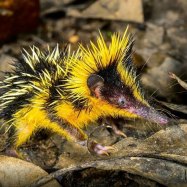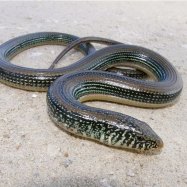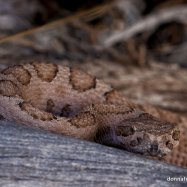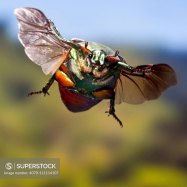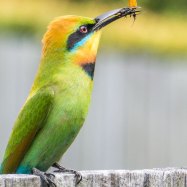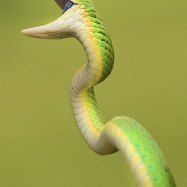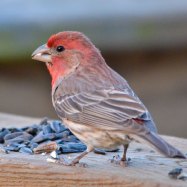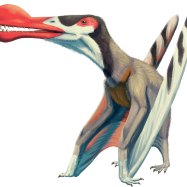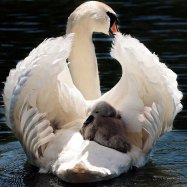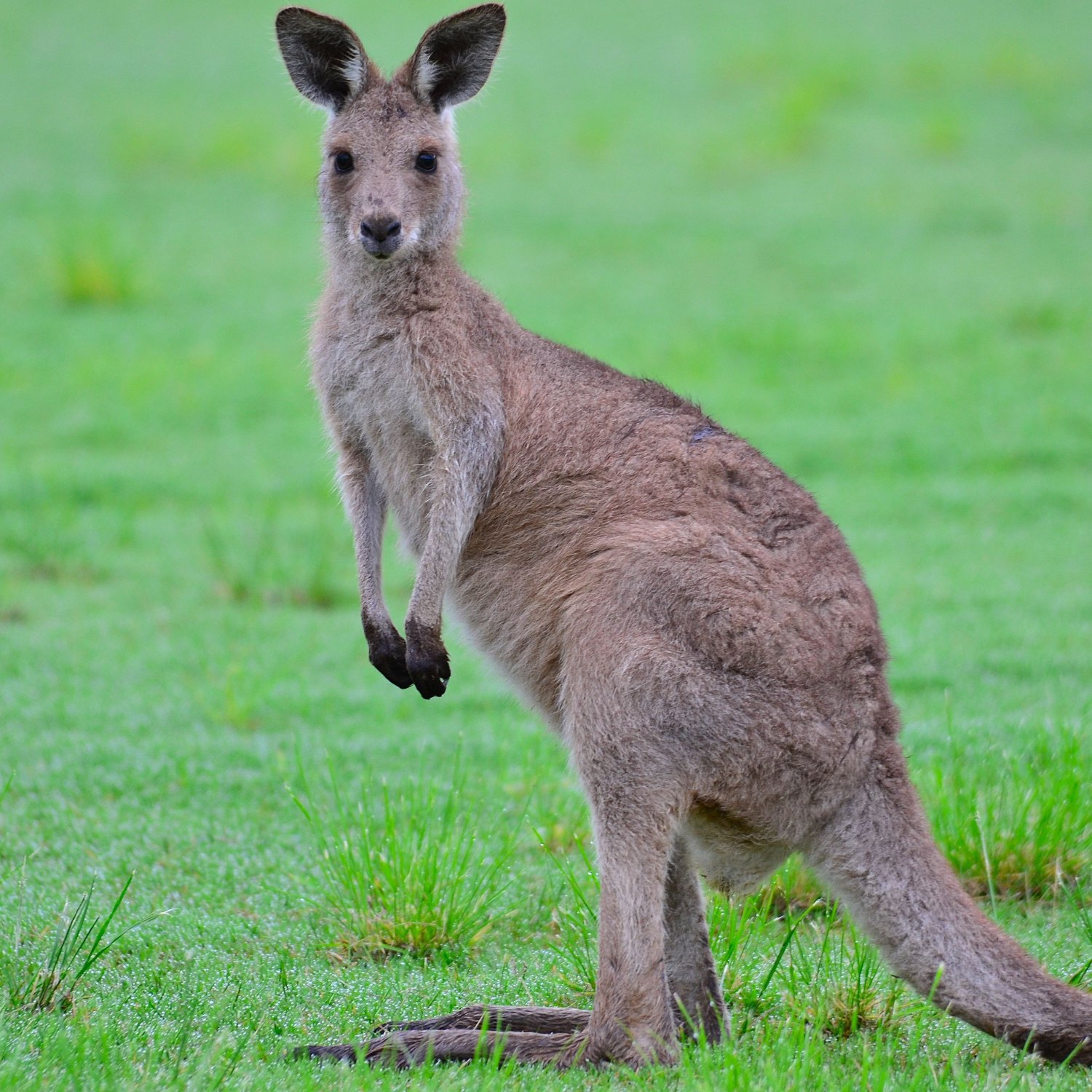
Kangaroo
1.1 to 1.8 meters
Kangaroos, a popular animal native to Eastern Australia, are members of the Macropodidae family. They are well-known for their strong hind legs and long tails, which help them hop at high speeds. Ranging from 1.1 to 1.8 meters in length, these fascinating creatures are a must-see on any trip Down Under. #Kangaroo #Eastern Australia #Macropodidae
Animal Details Summary:
Common Name: Kangaroo
Kingdom: Animalia
Habitat: Grasslands, woodlands, and forests
The Fascinating World of Kangaroos: Nature's Leaping Marvels
Kangaroos, with their distinct features and impressive leaps, are one of the most recognizable and beloved animals of Australia. They have captured the imaginations of people all over the world with their unique appearance and behavior, making them a popular subject in children's books, cartoons, and wildlife documentaries.But beyond their adorable looks and playful nature, there is so much more to these marsupials that make them truly remarkable creatures. From their scientific classification to their habitat and feeding habits, let's dive into the fascinating world of kangaroos and discover what makes them one of nature's leaping marvels Kangaroo.
The Scientific Name and Taxonomy of Kangaroos
The scientific name of kangaroos is Macropus, which comes from the Greek words “makros” meaning large and “pous” meaning foot, referring to their big hind legs. They belong to the Animalia kingdom, Chordata phylum, and Mammalia class, making them part of the same group as other mammals such as dogs, cats, and humans.Kangaroos belong to the Diprotodontia order, which is a group of marsupials with two lower incisors, specialized for gnawing tough plants. This order also includes other famous Australian animals such as koalas, wallabies, and possums.
Within the Diprotodontia order, kangaroos belong to the Macropodidae family, commonly known as the macropods, meaning large-footed. This family also includes wallabies, tree-kangaroos, and wallaroos.
Living in the Wild: Habitat and Geographical Distribution
Kangaroos are known to be native to Australia and New Guinea, but most species are found in Australia. They can be found in a wide range of habitats, including grasslands, woodlands, and forests. However, they prefer open and semi-arid areas with plenty of grass to feed on, making Eastern Australia their ideal location Kagu.Kangaroos are incredibly adaptable and can thrive in different climates. They are found in the wet, tropical rainforests of Northern Australia and the dry, arid regions of the Australian outback. They are also highly social animals and can be found in large mobs, which can consist of up to 1,500 individuals.
The Remarkable Feeding Habits of Kangaroos
Unlike their carnivorous cousin, the kangaroo rat, kangaroos are strictly herbivorous animals. They have a specially designed digestive system adapted to break down tough, fibrous plants, which makes up the majority of their diet.Kangaroos feed on a variety of vegetation, including grasses, leaves, and shrubs. They have a unique way of eating, using their large front paws to grasp stems, which they then strip their leaves from with their sharp incisors. They are also able to recognize which plants are edible and can provide the necessary nutrients for their diet.
One thing that sets kangaroos apart from other animals is their ability to regulate their reproductive system based on the availability of food. In times of drought or food shortage, a female kangaroo can delay the development of her embryo until the conditions are more favorable.
The Colorful World of Kangaroos
Kangaroos come in a variety of colors, ranging from red-brown to grey-brown, depending on the species. This coloration serves as camouflage, blending in with the surrounding grasses and providing protection from predators.Another notable physical feature of kangaroos is their long and powerful hind legs. These legs are responsible for their iconic leaping movement, which can reach up to 3 meters in one bound. This incredible jumping ability allows them to cover ground quickly and escape potential threats.
The kangaroo's tail is also an essential part of their physical makeup. It acts as a balancing tool, helping them maintain their balance while jumping, standing, and even sleeping. They can also use their strong tail to support their weight while sitting or grooming themselves.
Conservation Status and the Impact of Humans
Kangaroos have long been considered a national symbol of Australia and are protected by law. However, certain species are still at risk due to human activities such as deforestation and hunting. The Eastern Grey Kangaroo, the most common kangaroo species, is listed as a species of least concern on the IUCN Red List, but other species such as the Black Wallaroo and the Red Kangaroo are classified as vulnerable.Humans have also impacted kangaroo populations through intentional culling as a means of controlling their population. While this may be necessary in some cases, it can also have a significant impact on the ecosystem as kangaroos play a vital role in seed dispersal and maintaining the balance of plant communities.
The Significance and Representation of Kangaroos in Pop Culture
Kangaroos have become a beloved symbol of Australia and are often featured in popular culture. From stamps and coins to sports teams and national emblems, they are deeply ingrained in the country's identity. They have also become a popular tourist attraction, with kangaroo sanctuaries and feeding experiences in various parts of Australia.In literature and film, kangaroos are often anthropomorphized and portrayed as charismatic and friendly creatures, such as Roo from Winnie the Pooh and Kanga from the Jungle Book. They have also been featured in numerous documentaries, showcasing their incredible abilities and importance in the Australian ecosystem.
The Ongoing Research and Discovery of Kangaroos
While kangaroos may seem familiar to us, there is still much to learn about these unique animals. Researchers continue to study them to understand the complexities of their behavior, communication, and adaptations in their environment.One interesting discovery is the communication methods used by kangaroos. They use a series of gestures, posture, and vocalizations to convey different messages within their mobs. For example, a mother kangaroo will use specific vocalizations to communicate with her joey, while males use different sounds to show dominance or warn of potential threats.
There is also ongoing research on the unique proteins found in kangaroo milk, which could be used as anti-microbial agents in treating antibiotic-resistant infections.
In Conclusion
Kangaroos are an essential part of the Australian landscape and culture. With their distinct features, incredible leaping ability, and diverse behavior, they embody the spirit of resilience and adaptability. As we continue to learn more about these marsupials, it is clear that they are truly remarkable creatures and an integral part of our natural world. Next time you encounter a kangaroo, take a moment to appreciate its uniqueness and the important role it plays in its environment.

Kangaroo
Animal Details Kangaroo - Scientific Name: Macropus
- Category: Animals K
- Scientific Name: Macropus
- Common Name: Kangaroo
- Kingdom: Animalia
- Phylum: Chordata
- Class: Mammalia
- Order: Diprotodontia
- Family: Macropodidae
- Habitat: Grasslands, woodlands, and forests
- Feeding Method: Herbivorous
- Geographical Distribution: Australia and New Guinea
- Country of Origin: Australia
- Location: Eastern Australia
- Animal Coloration: Ranges from red-brown to grey-brown
- Body Shape: Strong hind legs, long tail
- Length: 1.1 to 1.8 meters
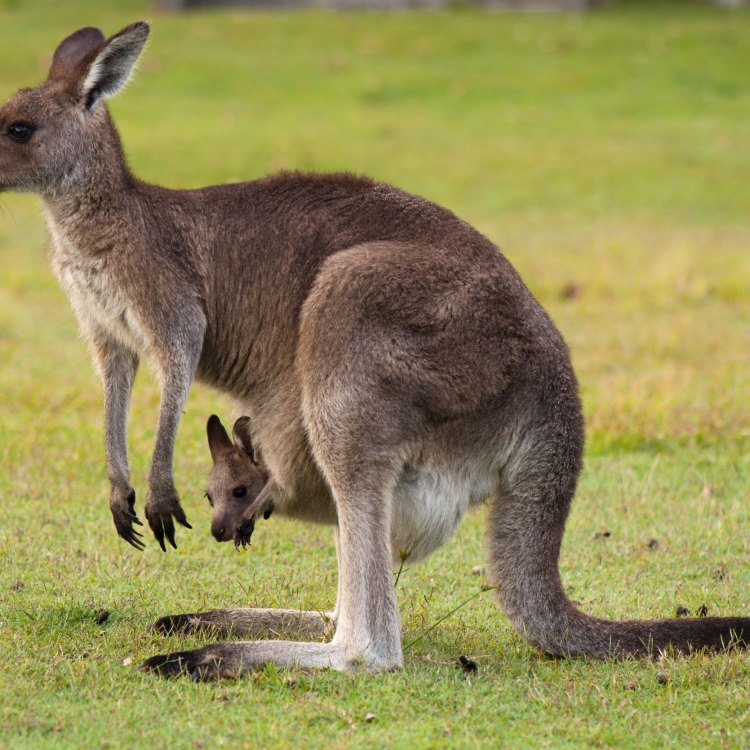
Kangaroo
- Adult Size: Medium to large
- Average Lifespan: 20 years
- Reproduction: Marsupial
- Reproductive Behavior: Females have a pouch where the young develop after birth
- Sound or Call: Loud thumping sound made by their large feet
- Migration Pattern: No specific migration pattern
- Social Groups: Matriarchal societies organized in groups called mobs
- Behavior: Mostly herbivorous, social, and active at night
- Threats: Habitat loss and fragmentation, hunting
- Conservation Status: Least Concern
- Impact on Ecosystem: Important grazers that play a role in maintaining grassland habitats
- Human Use: Kangaroo meat is consumed and their hides are used for products
- Distinctive Features: Large hind legs and tail, forward-facing pouch
- Interesting Facts: Kangaroos are the largest marsupials, males often box each other to establish dominance
- Predator: Dingoes and large birds of prey
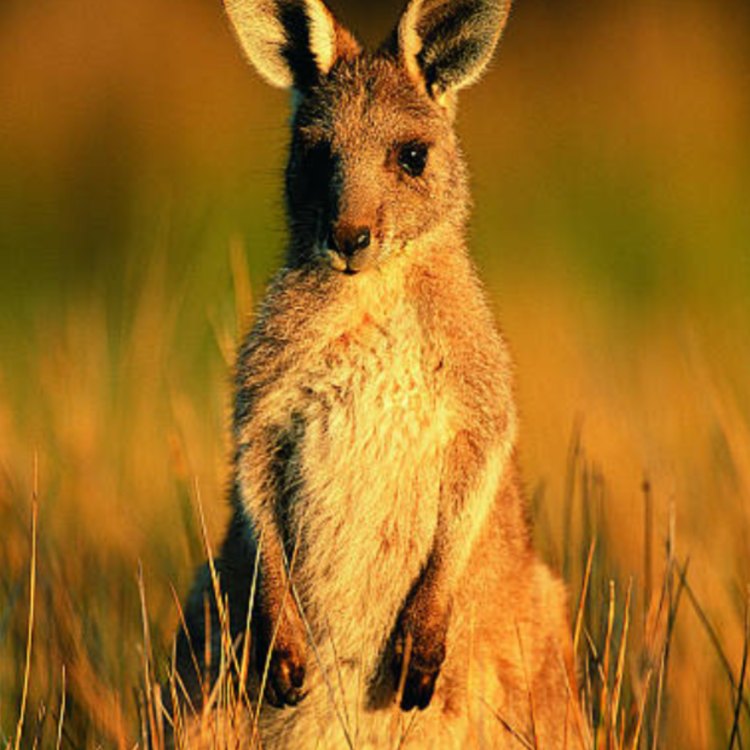
Macropus
The Majestic Kangaroo: A Unique and Fascinating Animal
When one thinks of Australia, the image of kangaroos often comes to mind. These iconic marsupials have captured the hearts and imagination of people all over the world. Their unique features, interesting behaviors, and important role in the ecosystem make them one of the most fascinating animals on the planet.Kangaroos are native to Australia and are found in different parts of the country, from the dry inland regions to the coastal areas PeaceOfAnimals.Com. They belong to the family Macropodidae, which means “big-footed”. This is a fitting name, considering their large hind legs and feet, which are their most distinctive feature. These powerful legs allow them to hop at great speeds, up to 40 miles per hour, making them one of the fastest land animals.
There are four main species of kangaroos: the red kangaroo, the eastern grey kangaroo, the western grey kangaroo, and the antilopine kangaroo. They range in size from about 3 feet to over 6 feet tall and can weigh between 40 to 200 pounds. This size difference is due to the fact that kangaroos have no fixed gestation period, and the length of their pregnancy can vary based on environmental conditions, resulting in different-sized offspring.
The average lifespan of a kangaroo is 20 years, although some have been known to live up to 25 years in the wild. They are herbivorous animals, feeding mostly on grass, leaves, and shrubs. This diet is reflected in their teeth, which are constantly growing to compensate for the constant wear and tear of their rough and fibrous food King Crab.
One of the most distinct features of kangaroos is their reproductive behavior. As marsupials, they have a pouch where the young develop after birth. The female kangaroo has a special organ called a begium, which carries the embryo, and the young are born after only about a month of gestation. The newborn joey, about the size of a jellybean, crawls its way up to the pouch where it latches onto a teat and continues to grow and develop for several months until it is ready to leave the pouch.
Kangaroos are also known for their loud thumping sound, made by their large feet hitting the ground as they hop. This serves as both a means of communication and a warning signal to other kangaroos of potential danger. They are also known to make other vocalizations, such as grunts, hisses, and coughing sounds.
Unlike many other animals, kangaroos do not have a specific migration pattern. Instead, they move around in search of food and water, which can change with the seasons and environmental conditions. They typically live in matriarchal societies, organized in groups called mobs, consisting of adult females and their young, and a few adult males.
Despite being mostly peaceful and social animals, male kangaroos have been known to engage in boxing matches, especially during mating season, to establish dominance over each other. This behavior sometimes leads people to think that kangaroos are aggressive animals, but in reality, they only fight when necessary and usually with other kangaroos, not humans.
Sadly, kangaroos face several threats in the wild, mainly due to humans. Habitat loss and fragmentation due to urbanization, agriculture, and mining are major issues for kangaroos, making it difficult for them to find food and mates. Additionally, kangaroos are hunted for their meat and hides, which are used for various products such as leather and pet food. These practices have raised concerns about the survival of some species, but for now, their conservation status remains “Least Concern.”
Kangaroos play a crucial role in the Australian ecosystem as one of the most important grazers. Their grazing helps keep grasslands in check, preventing them from growing out of control and becoming fire hazards. They also help maintain a healthy balance between plant and animal life in these habitats, making them essential for the survival of other species.
Humans also have a significant impact on kangaroos in terms of their usage. Kangaroo meat is consumed in Australia and some other parts of the world, with its low-fat and high-protein content making it a popular choice. Additionally, their hides are used for products such as shoes, belts, and even soccer balls. While this may seem problematic, it is important to note that the use of kangaroo products is heavily regulated and sustainable, with strict quotas and laws in place to protect their populations.
In addition to being important grazers and a source of food and products, kangaroos also hold cultural significance for Indigenous Australians. They are depicted in ancient cave paintings and hold a special place in traditional stories and beliefs.
Overall, the kangaroo's unique features, behaviors, and influence on the ecosystem make them an important and fascinating animal. They are a symbol of Australia, representing the country's vast and diverse wildlife. And while they may face threats and challenges, their resilience and adaptability have allowed them to thrive for millions of years. As humans, it is our responsibility to protect and appreciate these majestic creatures for generations to come.

The Fascinating World of Kangaroos: Nature's Leaping Marvels
Disclaimer: The content provided is for informational purposes only. We cannot guarantee the accuracy of the information on this page 100%. All information provided here may change without prior notice.

